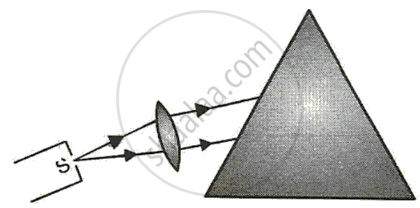Advertisements
Advertisements
Questions
How does the deviation produced by a triangular prism depend on the colour (or wavelength) of light incident on it?
Solution 1
Light of different colours have different speeds in a medium.
Therefore, the refractive index of glass (the material of prism) is different for different colours of light and the deviation caused by a prism is different for different colours of light.
Violet is deviated the most because in glass, speed of violet is least.
Red is deviated the least because in glass, speed of red is most.
Solution 2
Because different colours have different wavelengths in the medium, the deviation that a prism produces depends on the colour (or wavelengths) of the light that impinges on it. Consequently, for various colours of light, the refractive index of glass (the prism's substance) differs, and the deviation brought about by the prism varies accordingly.
APPEARS IN
RELATED QUESTIONS
How does the deviation produced by a triangular prism depend on the colours (or wavelengths) of light incident on it?
Which colour of white light travels fastest in glass?
If a monochromatic beam of light undergoes minimum deviation through an equiangular prism, how does the beam pass through the prism, with respect to its base?
Fig shows part of the arrangement for obtaining pure spectrum.
(a) Complete thediagram and show how to obtain a pure spectrum.
(b) What are the conditions necessary for obtaining a pure spectrum?

Light of different colours is deviated through different angles, by a prism. Explain the reason.
Explain, why quartz prism is required for obtaining the spectrum of ultra-violet light?
A prism causes dispersion of white light while a rectangular glass block does not. Explain.
Which colour of white light travels slowest, in glass?
The wavelengths for the light of red and blue colours are nearly 7·8 × 10-7 m and 4·8 × 10-7 m respectively.
Which colour has greater speed in glass?
